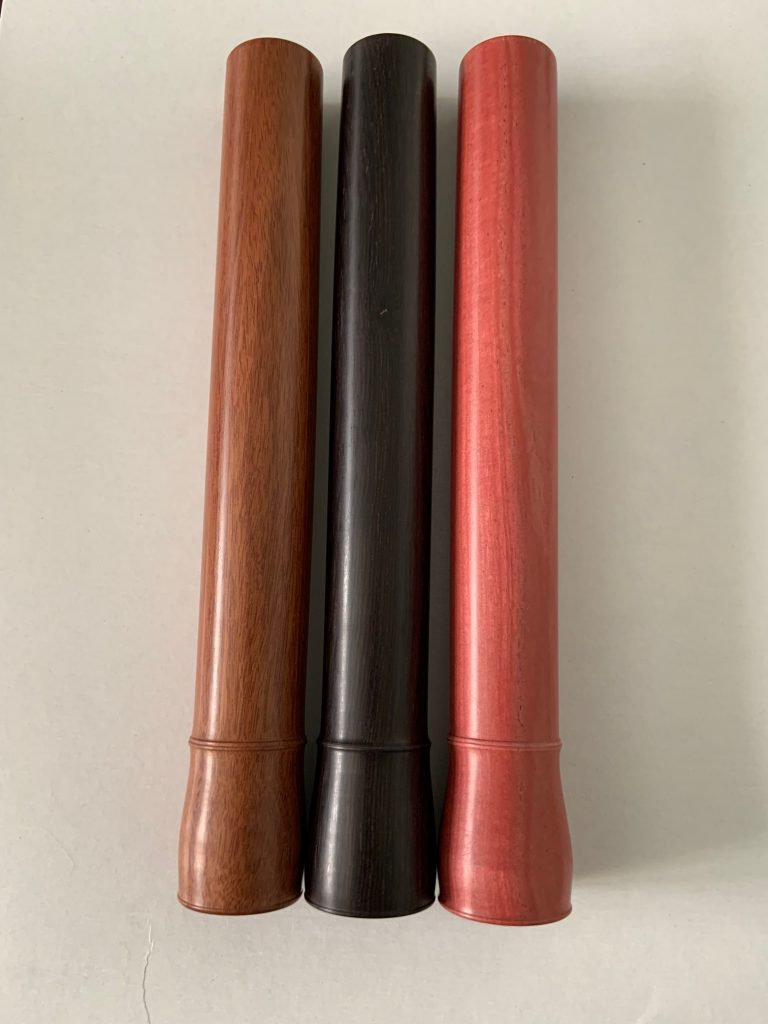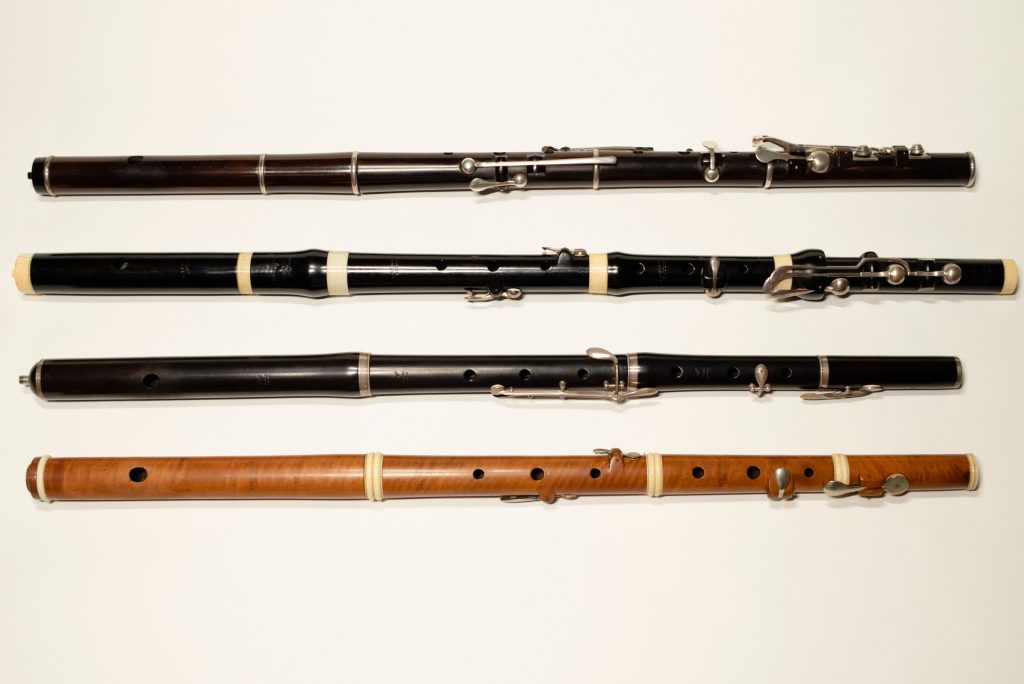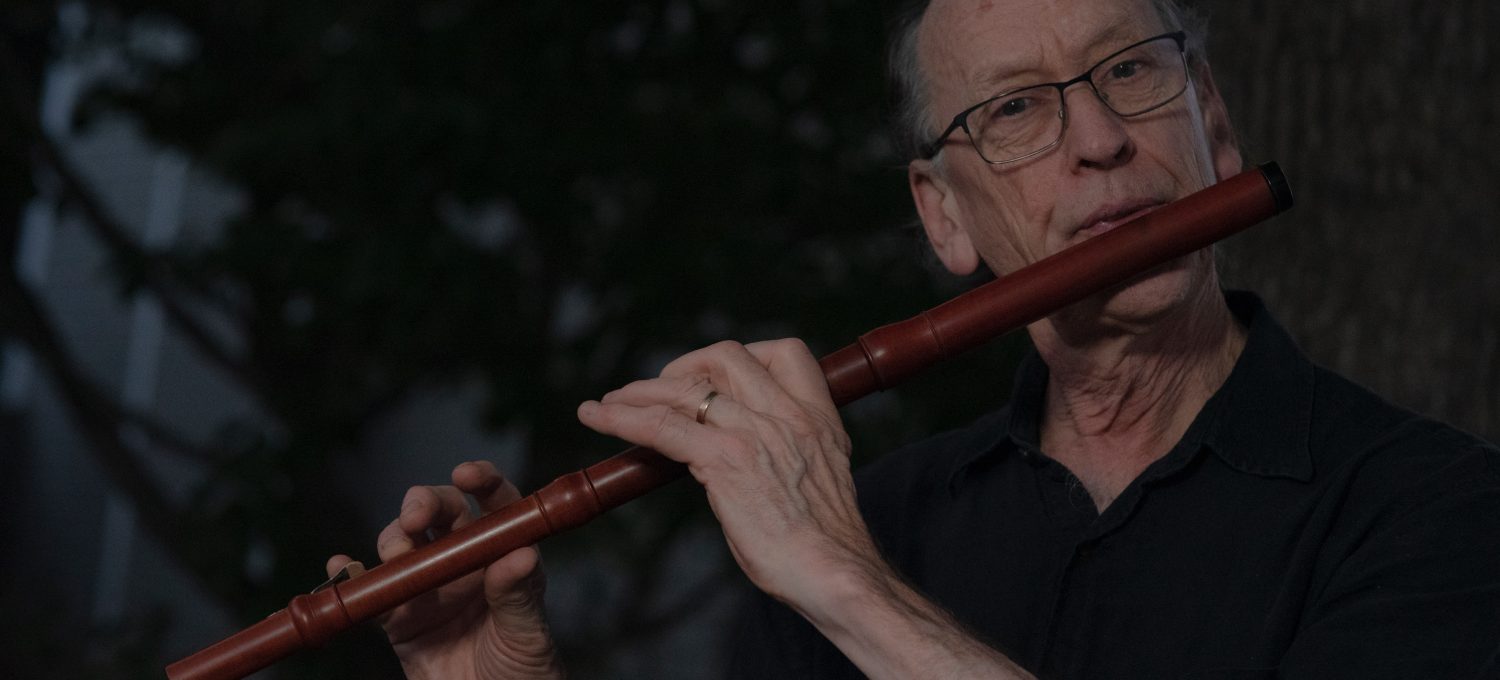During our summer meeting of Flute Examiner staff, we talked about how one of the best things about NFA Conventions is that they bring together flutists of all ages and abilities. There are so many flutists who attend who are not professional flutists, but they love playing the flute. Then we decided that we’d like to interview people this year who are brilliant humans and flutists who are not necessarily flute professionals. I immediately thought of asking Richard if he’d be willing to do an interview with me. He said yes. In fact, he’s always said yes when anybody from the Association for Body Mapping Education (ABME) asks him for anything, including serving on ABME’s Scientific Advisory Board. I met Richard in 2007 at the 3rd Biennial ABME (formerly Andover Educators) Professional Conference at Denison University. Since then, I’ve had the pleasure of attending multiple presentations that he has given at subsequent conferences, teaching him a flute lesson or two, hearing him play on our conference recitals, enjoying fascinating conversations like the one you’re about to read and going white water rafting on the Chattahoochee River as a fun activity for another conference. He’s passionate about flutes, flute playing, flute making and flute restoration. He is a life-long learner and embraces challenges of all sorts.
Here is what Richard does for his day job: Richard Nichols received his PhD in Physiology from Harvard Medical School. He is currently Professor in the newly formed School of Biological Sciences. His long-standing research interest has been the manner in which sensory information from muscles is utilized in the spinal cord to control the motions of our limbs. His current projects include the development with a collaborator of an exercise protocol that normalizes the organization of spinal pathways and improves motor function after spinal cord injury. He has been associated with ABME for many years serving in an advisory capacity concerning the scientific underpinnings of body mapping.
KW: So tell me about your early music education.
RN: I played the trombone in high school because I inherited it from my brother. No dispersions against the trombone as it is a fabulous instrument, but I never thrived on it. My music teacher at the time used to say, “Another week of agony.” I really loved music and tried other instruments until I became a faculty member in my early 30s at the University of Washington. For some reason, I said to myself, “I want to play the flute.” It just happened. I had admired the instrument for a long time. I took lessons from a flute student at the University of Washington, who was very helpful and got me started. Then we moved to Atlanta and I found a fabulous teacher, Teresa Texeira, to really propel my education on the modern flute. At the same time, she introduced me to the Baroque flute. As a result, I became a little bit “split brain” between historical and modern instruments. That’s how it really started. I went to Wildacres about 25 years ago on her recommendation and I got to meet William Bennett and Stephen Preston. That was the same meeting where I met Barbara Conable and that’s how I got started with ABME.
KW: Wow, how cool! We owe a great debt to Teresa Texeira for bringing you into our organization. How many historical flutes do you have in your collection?
RN: Probably, 12-15 or so, and also some modern copies of original instruments. I have 10-12 historic instruments that span Baroque through Classical through Romantic, the so-called simple system flutes from the mid19th century. I actually have a beautiful Bonneville sterling silver flute from 1920 that I bought from my friend Carl Hall. I have a couple of flutes from Rudall Carte and Co, including one of the1867 models with open G# and a somewhat different fingering system that was touted to be more acoustically correct than the modern one. I find flutes that require restoration and learn how to make them sing again. I’m also once again starting to build Baroque flutes because I’m going into my semi-retirement year and have more discretionary time. Between restoration and building and playing, I have a very satisfying avocation.
KW: How did you learn to restore and build these flutes?
RN: There used to be a listserve on email where makers and restorers would send in hints and comments. The major influence was a colleague in town named Harry Vas Dias (http://vasdiasoboes.com/) who is a Baroque oboe maker. He’s originally from the Netherlands but he’s been in this country for most of his life. He’s married to Pat Vas Dias who is a retired violinist from the Atlanta Symphony. Harry was a professional oboist with an orchestra as well, but he turned to building Baroque oboes many years ago. He’s in his late nineties right now and still active. Up until Covid, I would regularly go over and play duets with him – Baroque oboe and Baroque flute. Eventually, he had difficulty with the oboe, so he took up the modern flute. He has taken lessons from some Atlanta symphony members including the late Carl Hall. So now we play modern flute duets, mostly 19th century literature. He’s taught me a lot. In fact, he had a set of reamers for one particular Baroque flute (Scherer) from the 18th century that were based on measurements from an original instrument in the Dayton C. Miller collection. I borrowed them and eventually bought them. So I have the reamers that are the heart of the Baroque flute, with their special tapers. I bought some old flutes that were cheap and figured out how to fix them up after making many mistakes. I have also gotten considerable advice from Chris Abell and Michael Lynn.
KW: What kind of wood do you use when you’re building?
RN: Traditional flutes were made of cocus wood, African Blackwood, European boxwood and ebony. I’ve been a woodworker and am interested in branching out. The first flute I ever built was made of pink ivory. The wood is gorgeous, literally pink colored. {KW: Richard is playing this pink ivory flute in the photo at the top of the article.] I also have some kingwood, desert iron wood, and mopane. Mopane is a more recently recovered wood from East Africa which isn’t quite as endangered as the other ones. In fact, my main modern flute was made by Chris Abell in Asheville and it’s made of mopane. This flute has a wonderful, rich sound. Chris has also developed a fipple head joint for his flutes that transform the flute into a wonderful low D whistle that of course can play in any key!
KW: Chris Abell’s flutes are very nice. I thought you played on a silver modern flute?
RN: I had an excellent Tom Lacey silver flute which I sold quite a long time ago in order to buy a headjoint from Chris and some other historic flutes. Actually, Chris is a pretty good friend of mine and Patricia and I go up and visit sometimes. I play that (Abell) most of the time. I also sometimes play the Bonneville sterling silver flute, which is gorgeous and has a really light, facile action. Bonneville was a student of Louis Lot. Sometimes I’ll pull that out if I want to play some Debussy or other late nineteenth century French music.
KW: Do you have a workshop at your house?
RN: Yes, it’s in the garage. So I have to take the lawn mower and the chipper/shredder out, but it’s fine. We have a very small house but I do have adequate woodshop facilities. I have a beautiful, modern professional lathe, which is the main thing one needs for this sort of work. And then I have a jeweler’s bench where I can do the key work and repairs.

KW: Which one of your historical flutes is your main go-to instrument or does it depend on the repertoire and location?
RN: Yes, the latter is the case. You might be detecting that I could be accused of being a bit of a dilettante. My moods change quite dramatically. I’m absolutely in love with late French Romantic impressionistic music. I’ve just started learning Nocturne by Lilii Boulanger
KW: Great piece!
RN: It looks pretty simple, but it’s not. Griffes Poem and some transcriptions like the Franck Violin Sonata are my favorites. But then I’ll want to play Baroque and Renaissance flute. The Renaissance flute is the other end of the spectrum—a tube with 6 holes. I bounce between Renaissance, Baroque, simple system and modern flutes. I use the simple system flutes for my other great passion which is Celtic /Scottish/Irish folk music.
KW: So you have lots of flutes and are interested in many genres and styles. This is great because so many flutists are just playing silver modern flute.
Where do you play? Are you doing chamber groups, ensembles or what?
RN: I’m a member of two music groups. One is a Renaissance group where I play mainly Renaissance flute and dabble in recorder a little bit. The other group is a Russian folk orchestra, the Atlanta Balalaika Society. I’ve been with them since the 1980s. The music is mostly modern pieces built on Russian/Slavic/Eastern European music. These modern arrangements are really tough. We were just playing two pieces by Shostakovich – Serenade from the Gadfly Suite and Waltz from Jazz Suite No. 2. Besides the music being beautiful, the other thing about it is that it’s where I learn to improve intonation and play in groups. I regard myself as an intermediate player. I’m now convinced that I’ll never be a virtuoso, but I still have fun. It really pushes me to my absolute limits of technical facility, so it’s been very valuable. In the spring the members of the orchestra voted to actually keep playing and dedicate ourselves to Ukrainian music, instead of disbanding due to the Ukraine situation. I have a Ukrainian connection myself, though I have no Slavic blood. I have a long standing relationship with a former Professor of Slavic Languages at the University of Alberta, Andrij Hornjatkevyc, and I’m interested in the Ukrainian national instrument which is the bandura, a six string instrument. He and I built a pair of instruments a long time ago. Since the war started, I’ve gotten involved in bandura construction and music again. We start every concert with the Ukrainian national anthem. We had a national meeting of the Balalaika and Domra Association (http://bdaa.com/) in Asheville in July. Chris Abell was there and got to hear me play his flute. The director and soloists are Ukrainian. Our own local group played several pieces together at the final concert and then everybody from around the country joined in. It was quite moving.

KW: My favorite piece that I heard in August at the NFA Convention in Chicago is Poem by a Ukrainian composer, Zhanna Kolodub, and was performed by Ukrainian flutist Denis Savelyev. You’d probably really enjoy it. I found an article about a benefit program he organized with his classmates.
https://hub.jhu.edu/2022/04/14/students-organize-benefit-concert-for-ukraine/
Here’s a youtube version, which gives you an idea. https://www.youtube.com/watch?v=ZaUEC4P8b2U
How do you find time to practice with your day job?
RN: That has been an ongoing problem for decades. My day job is an academic one, which means on deck 24/7. The Balalaika Orchestra rehearses once a week. It’s become implanted in my schedule and it keeps me grounded. Not only that, it keeps me from being a complete dilettante. Now my schedule has eased up. I’m down to 80% effort this year as I have just turned 75. My wife Patricia and I spend as much time with each other as possible. I just reserve time every day to play for at least an hour, if not more. Of course, then I have the battle of what flute am I going to play. I remember when I was first starting out at my job in Atlanta, I was a young assistant professor having to get grants. We had young kids and I had to go down to the basement at 6:00 in the morning and play scales on the Baroque flute. I just had to find little bits of time here and there, and the desire to do it has not abated. With my schedule now, I often have time in the late afternoons, around 4 or 5, to take an hour and just play. Sometimes early in the morning works well too. There is no formula really, just squeezing it in.
KW: With the addition of a bit more time in your schedule, do you want to pursue more performances with your groups or just more time to practice on your own?
RN: I am looking around to expand my experience with the instrument. I have learned a lot from my association with the Russian folk orchestra. Now I’d like to get into some improvisation with various forms of music. The ability to memorize pieces, ornament them, and really take off are my goals for the future. If I can find other people who are interested in the same sort of thing, I’d probably start to edge in that direction.
[KW: Here we geeked out about wooden flutes and Irish music and got a little off track. I mentioned that I’m starting to look for somebody to modify my Irish flute by building a key for the left hand first finger. Since my reconstructive hand surgery in 2012, I haven’t been able to get my finger to cover the hole. What I need is a key closer to the middle finger that opens and closes the first finger hole.]
RN: I just acquired an 6 key by Christopher Gerock, who was an English flute maker from the early 1800s. It is a very nice flute and good for celtic music as well as for the 19th century literature..
I did have the experience of modifying a Haynes flute sometime ago. A woman came to the Division of Physical Therapy at Emory University, where Patricia had taught for many years. The patient had lost the index and middle fingers on her right hand and was a flutist. There’s an article in NFA Flutist Quarterly that describes how we designed the modification to allow her to regain the ability to use her right hand.
I took some parts from the hardware store and mocked up some keys for the right hand so she could play them with her thumb. She used a cradle made by a rehabilitationist to cradle the flute. That worked out pretty nicely. A local musical instrument repairman, Charles King, took on the job and made a beautiful sterling silver modification to her flute. Again, Teresa pointed me in his direction.
Dr. Nichols is also passionate about helping people solve problems. He’s interested in helping with my key problem and said, “There’s got to be a solution.” I enjoyed spending a little bit of time with him over Zoom and look forward to the next ABME conference when we can hopefully play and talk together in person.


I play traditional Irish music and have developed a hand condition that somewhat numbs the fingertips. I now have difficulty covering the holes of a simple-system flute. My solution is to play a silver plateau model Boehm flute with a wooden headjoint made by Chris Abell. I get the sound I want with better volume and intonation.
Thanks. This is a good compromise!